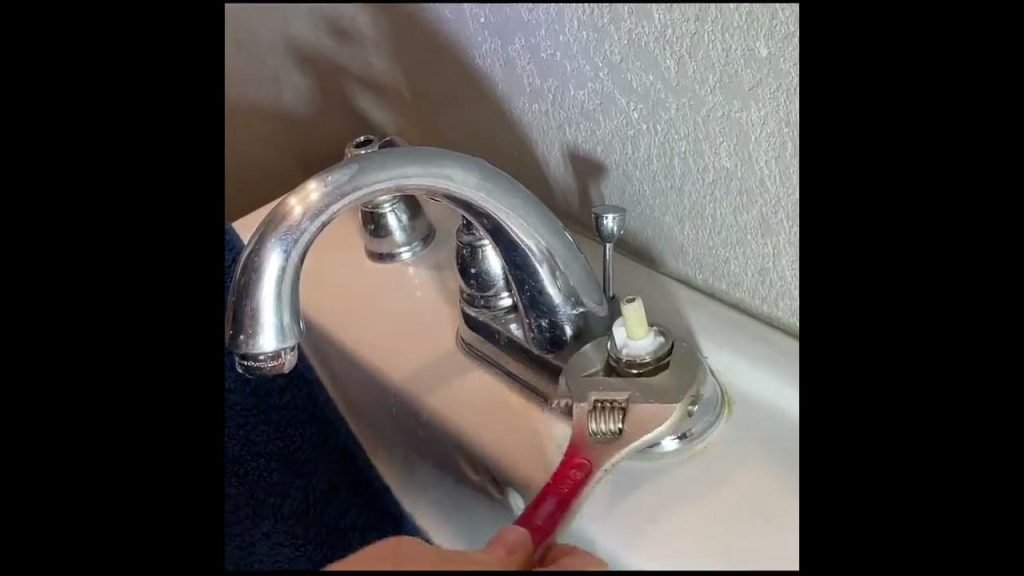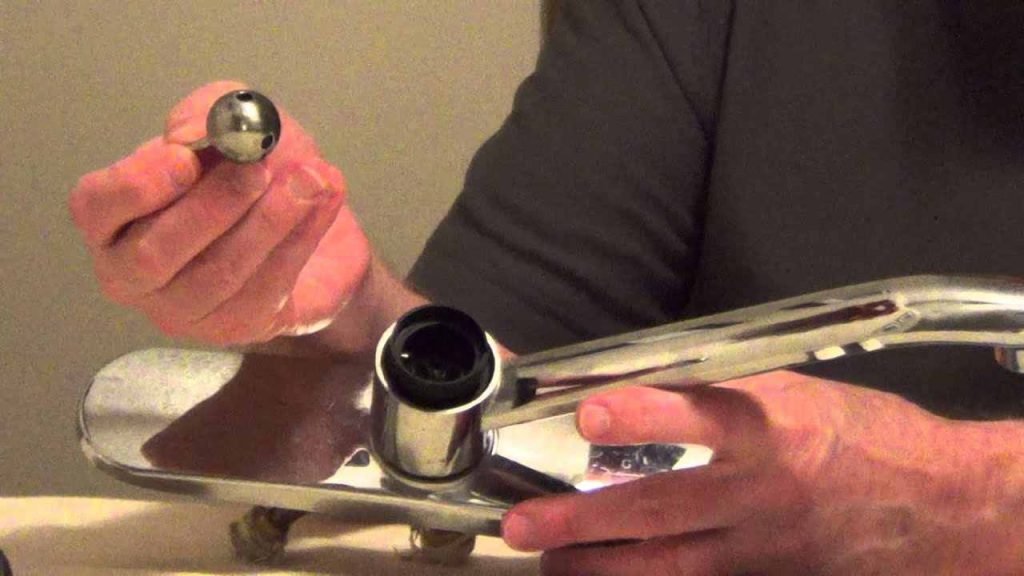Dealing with a leaky faucet can be more than just a minor annoyance; it can lead to wasted water and increased utility bills if left unchecked. If you’re an Alhambra resident facing this common household issue, you’re in the right place! Fixing a leaky faucet is a straightforward task that many homeowners can tackle on their own, saving both time and money. In this guide and with the help of The Pro Plumbing, we’ll walk you through the essential steps to identify the cause of the leak, gather the necessary tools, and successfully fix that pesky faucet, restoring peace and efficiency to your home.

Whether your faucet is dripping incessantly or just leaking occasionally, understanding the basics of faucet repair and leak detection services can make a big difference. Not only will it help you save water and reduce your utility bills, but it will also extend the lifespan of your faucet. With a few simple tools and some guidance, you can tackle this project with confidence and keep your home in top shape. Additionally, if you suspect a more serious issue, knowing when to call leak detection services can save you time and prevent potential water damage.
Understanding the Common Causes of Faucet Leaks
Faucet leaks can be frustrating, and knowing their common causes is the first step toward effective repair. One primary reason is worn-out washers or O-rings, which can degrade over time due to constant friction. Additionally, mineral buildup from hard water can create pressure, leading to leaks around the faucet. Loose parts, including nuts and screws, may also contribute to the problem. In some cases, corroded faucet components or damaged seals can lead to leaks as well. Recognizing these issues early can help you address them before they escalate into more significant problems. By understanding these common causes, Alhambra residents can be better equipped to diagnose and fix faucet leaks efficiently.
Tools You’ll Need for Faucet Repair
Before diving into faucet repair, it’s essential to gather the right tools to make the process smoother and more efficient. Commonly needed tools include an adjustable wrench, screwdrivers (both flathead and Phillips), and pliers for gripping and twisting stubborn parts. A basin wrench can be especially handy for reaching tight spaces beneath the sink. You’ll also want to have replacement washers, O-rings, or cartridges on hand, depending on the type of faucet you have. A towel or rag is useful for cleaning up any spills and protecting your countertop. By ensuring you have these tools ready, you’ll set yourself up for a successful and hassle-free faucet repair experience.
Step-by-Step Guide to Identifying the Leak Source
Identifying the source of a leak is crucial for effective repair. Start by examining the faucet and surrounding areas for signs of water accumulation. Check the faucet handle and spout for dripping or moisture, as these are common leak points. Next, inspect the sink basin for puddles that could indicate a leak beneath the faucet. Turn off the water supply and disassemble the faucet according to its type, taking note of how parts fit together. As you examine the components, look for damaged washers, O-rings, or cartridges. Remember to run water through the faucet to help pinpoint the leak’s origin. This step-by-step approach will help you accurately identify the source of the leak for a successful repair.
How to Fix a Dripping Faucet
Fixing a dripping faucet is a straightforward process that can save you money and frustration. Begin by turning off the water supply to avoid any spills. Remove the faucet handle by loosening the screw, usually located underneath or behind the handle. Once the handle is off, disassemble the faucet to access the internal components. Depending on the faucet type, replace the worn-out washer, O-ring, or cartridge with a new one. Make sure to clean any mineral buildup or debris that may have accumulated. Reassemble the faucet in reverse order, ensuring all parts are tightly secured. Finally, turn the water supply back on and check for leaks, confirming that the repair was successful and the dripping has stopped.
Repairing Leaks in Compression Faucets
Compression faucets are a common type of faucet that can develop leaks, particularly around the handles. To repair a leak in a compression faucet, first turn off the water supply and drain any remaining water from the lines. Remove the handle by loosening the screw, and then unscrew the packing nut to access the valve seat. Inspect the rubber washer at the bottom of the valve for wear and tear; if it’s damaged, replace it with a new one of the same size. Reassemble the faucet, tightening the packing nut and handle securely. Once everything is reassembled, turn the water supply back on and check for leaks. With these simple steps, you can effectively repair leaks in compression faucets.
Handling Cartridge Faucets: A Repair Guide
Cartridge faucets are known for their ease of use and modern design, but they can still develop leaks over time. To repair a cartridge faucet, begin by turning off the water supply to prevent spills. Remove the faucet handle by loosening the screw, which may be hidden under a decorative cap. Once the handle is off, pull out the cartridge from the faucet body. Inspect the cartridge for any visible damage, such as cracks or worn O-rings. If necessary, replace the cartridge with a new one designed for your specific faucet model. Reassemble the faucet carefully, ensuring everything fits snugly. After completing the repair, turn the water supply back on and test the faucet for leaks to ensure a successful fix.
Dealing with Ball Faucets: Common Issues and Fixes
Ball faucets, commonly found in kitchens, have a unique design that can lead to specific leak issues. One common problem is leaks around the spout, often caused by worn-out seals or O-rings. To address this, start by turning off the water supply and disassembling the faucet. Remove the handle and the ball assembly to access the seals. Inspect the seals for signs of wear, and replace them as needed. It’s also essential to clean any mineral buildup that may hinder proper function. Reassemble the faucet carefully, ensuring all components are securely in place. After reassembly, turn the water back on and check for leaks. With these simple fixes, you can keep your ball faucet functioning properly.

When to Replace Your Faucet Instead of Repairing
While many faucet leaks can be repaired, there are times when replacement is the more practical solution. If your faucet is old, has multiple leaks, or has visible corrosion, it may be more cost-effective to invest in a new unit. Additionally, if you find yourself frequently repairing the same faucet, it could be a sign of a more significant underlying issue. Newer faucets often come with updated technology, improved efficiency, and warranties that provide peace of mind. When considering replacement, assess the overall condition of the faucet, the cost of repairs, and your long-term goals. If it seems more sensible to replace rather than repair, you’ll save time and effort while enhancing your home’s functionality and appearance.
Preventative Maintenance Tips for Faucets
Regular maintenance can extend the life of your faucets and prevent leaks from developing. One key tip is to periodically check for signs of wear, such as loose handles or water stains around the base. Ensure that the faucet’s aerator is clean, as mineral buildup can restrict water flow and cause unnecessary pressure. It’s also wise to inspect O-rings and washers during these checks, replacing them if they show signs of wear. Additionally, using a water softener can reduce mineral buildup in your plumbing system, helping to prevent leaks. Finally, ensure all connections are tight and secure. By following these preventative maintenance tips, Alhambra residents can keep their faucets in optimal condition and avoid costly repairs.
The Importance of Regular Leak Detection Services
Regular leak detection services are vital for homeowners who want to maintain a safe and efficient plumbing system. Over time, undetected leaks can lead to significant water damage, mold growth, and increased utility bills. Professional leak detection services use advanced technology to identify hidden leaks that may not be visible to the naked eye, providing peace of mind for homeowners. These services can also help identify other plumbing issues, such as corrosion or pressure problems, before they escalate. Scheduling routine inspections ensures that your plumbing system remains in top shape, protecting your home’s value and your family’s health. By prioritizing leak detection, Alhambra residents can prevent minor issues from turning into major headaches.
Knowing When to Call a Professional Plumber
While many faucet repairs can be handled by homeowners, knowing when to call a professional plumber is essential. If you encounter persistent leaks after multiple attempts at repair, it may indicate a more complex issue requiring expert attention. Additionally, if you lack the time or tools to address the problem effectively, a plumber can save you effort and ensure a proper fix. Complications such as water damage or mold growth from unresolved leaks also warrant professional help. A qualified plumber can assess the situation, provide tailored solutions, and guarantee the work meets local plumbing codes.
Conclusion
Fixing a leaky faucet may seem like a daunting task, but with the right tools and knowledge, it can be a straightforward DIY project for Alhambra residents. Understanding the common causes of leaks, knowing how to use essential tools, and following step-by-step repair guides empower homeowners to tackle issues effectively. Regular maintenance and the timely use of leak detection services can prevent minor leaks from turning into costly repairs. However, it’s equally important to recognize when a problem requires professional expertise. By combining DIY skills with professional assistance when needed, you can ensure your faucets remain in excellent condition, contributing to a more efficient and enjoyable home environment. Don’t let leaks dampen your day—take action today!
FAQs
What are the common causes of a leaky faucet?
Common causes of a leaky faucet include worn-out washers, damaged O-rings, mineral buildup, and loose components. Identifying these issues early can help prevent further damage and costly repairs.
How do I know if my faucet needs a repair or replacement?
If your faucet is consistently leaking, has multiple leaks, or shows signs of corrosion, it may be time to replace it. Frequent repairs can also indicate underlying problems that warrant a new faucet.
What tools do I need for faucet repair?
Essential tools for faucet repair include an adjustable wrench, screwdrivers, pliers, and replacement washers or cartridges. Having these tools on hand will make the repair process smoother and more efficient.
Can I fix a leaky faucet myself?
Yes, many faucet leaks can be fixed with basic DIY skills and the right tools. Following step-by-step guides can help you confidently tackle the repair process.
When should I call a professional plumber for a leaky faucet?
You should call a professional plumber if you encounter persistent leaks after several repairs, or if you lack the time or tools to address the problem. Complex issues or signs of water damage also warrant professional assistance.





